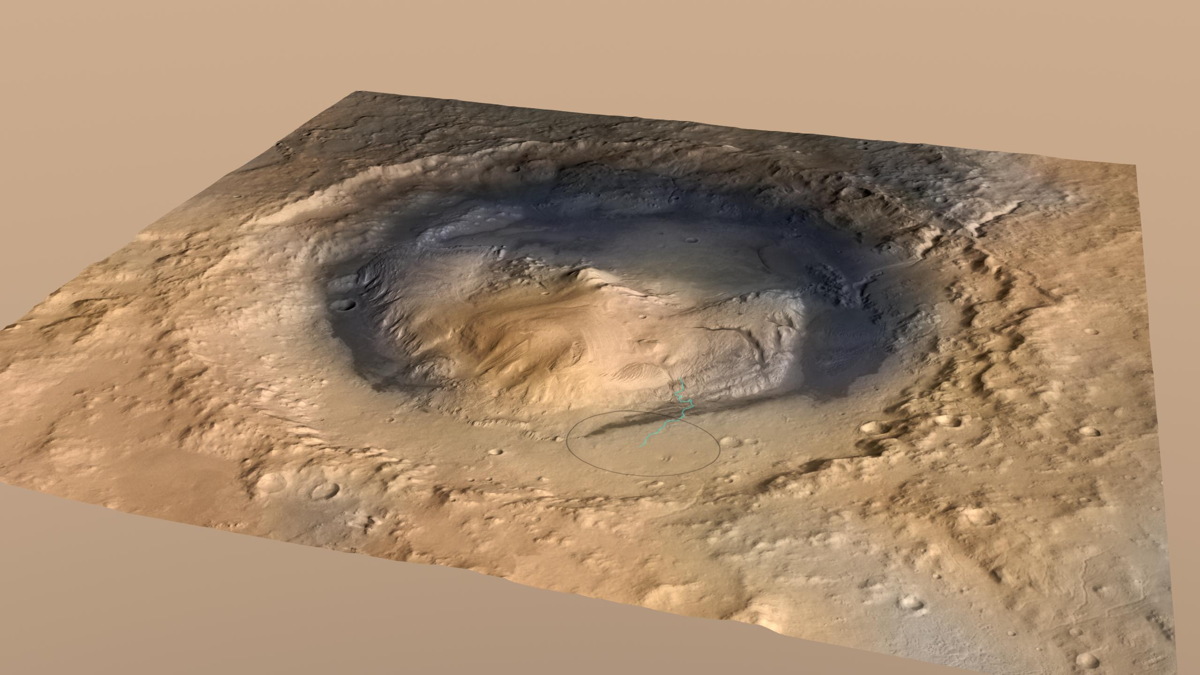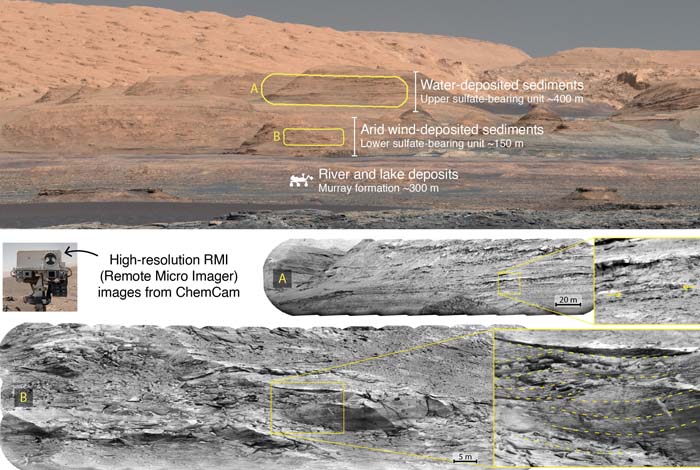The water on Mars didn't run dry all at once, study finds
Where did all that water go?

Mars did not dry up all at once, but fluctuated between dry spells and wetter times before becoming the arid planet it is today, a new study finds.
Previous studies havefound that Mars was once wet enough to cover its entire surface with an ocean containing about half as much water as Earth's Atlantic Ocean. However, the Red Planet is now an extraordinarily arid planet, a thousand times drier than the driest parts of the Atacama Desert in Chile, the driest place on Earth, according to NASA.
To shed light on how Mars dried up, scientists analyzed data from NASA's Curiosity rover on the Red Planet. The machine is currently exploring the base of Mount Sharp, a giant mound about 3.4 miles (5.5 kilometers) high rising up from the center of 96-mile-wide (154 km) Gale Crater.
Related: The search for water on Mars
The wet (and dry) history of Mount Sharp on Mars
Officially known as Aeolis Mons, Mount Sharp "is a giant mound of sediment — rocks deposited by wind and water," study lead author William Rapin, a planetary scientist at the University of Toulouse in France, told Space.com. Prior work dated its base as 3.6 billion years old, placing it within Mars' Hesperian period, when the planet was shifting from wet to dry.
Spacecraft in orbit around Mars had already provided clues about the mineral composition of the slopes of Mount Sharp. Now, using the Remote Micro-Imager telescope on Curiosity's ChemCam instrument, Rapin and his colleagues examined the mound's steep terrain to yield insights on the distant past of the Red Planet.
Over vast amounts of time, geological events can deposit layers, or strata, of rock — for instance, volcanic eruptions can lay down thin layers of ash, or thick layers of lava. Scientists can analyze strata to deduce the events that created them, shedding light on the ancient history of an area, or an entire planet.
Get the Space.com Newsletter
Breaking space news, the latest updates on rocket launches, skywatching events and more!

The scientists focused on sedimentary beds about 2,790 feet (850 meters) thick. The base of Mount Sharp consists of clays about 985 feet (300 m) thick likely associated with lakes. Above that, researchers identified wide erosion-prone layers about 490 feet (150 m) thick likely deposited by windblown dunes during a long dry spell. Then, on top of that, scientists saw thin, alternating beds of light and dark rock about 1,310 feet (400 m) thick, which are typical of river floodplain deposits, marking the return of wetter conditions.
"We can see changes in climate recorded in the sedimentary structure of the mound," Rapin said. The scientists detailed their findings online April 8 in the journal Geology.
Previous studies found that Mars dried up completely about 3 billion years ago. These new findings reveal the Martian climate underwent several large-scale fluctuations between dry spells and times lush with rivers and lakes before it became completely arid.
Curiosity is scheduled to climb the foothills of Mount Sharp and drill into its various beds of rock. This could shed light on, for instance, whether the dunes during the dry period were made of salt or silicate grains.
"Knowing what they were made of may help us maybe understand what the reasons were behind the fluctuations in climate," Rapin said.
Originally published on Space.com.
Join our Space Forums to keep talking space on the latest missions, night sky and more! And if you have a news tip, correction or comment, let us know at: community@space.com.

Charles Q. Choi is a contributing writer for Space.com and Live Science. He covers all things human origins and astronomy as well as physics, animals and general science topics. Charles has a Master of Arts degree from the University of Missouri-Columbia, School of Journalism and a Bachelor of Arts degree from the University of South Florida. Charles has visited every continent on Earth, drinking rancid yak butter tea in Lhasa, snorkeling with sea lions in the Galapagos and even climbing an iceberg in Antarctica. Visit him at http://www.sciwriter.us









